This post may contain affiliate links. Please read our disclosure policy.
Make creamy and rich ashta (Lebanese clotted cream) with a handful of ingredients. It is perfect to enjoy on its own or use as a topping or filling for Middle Eastern pastries and desserts!
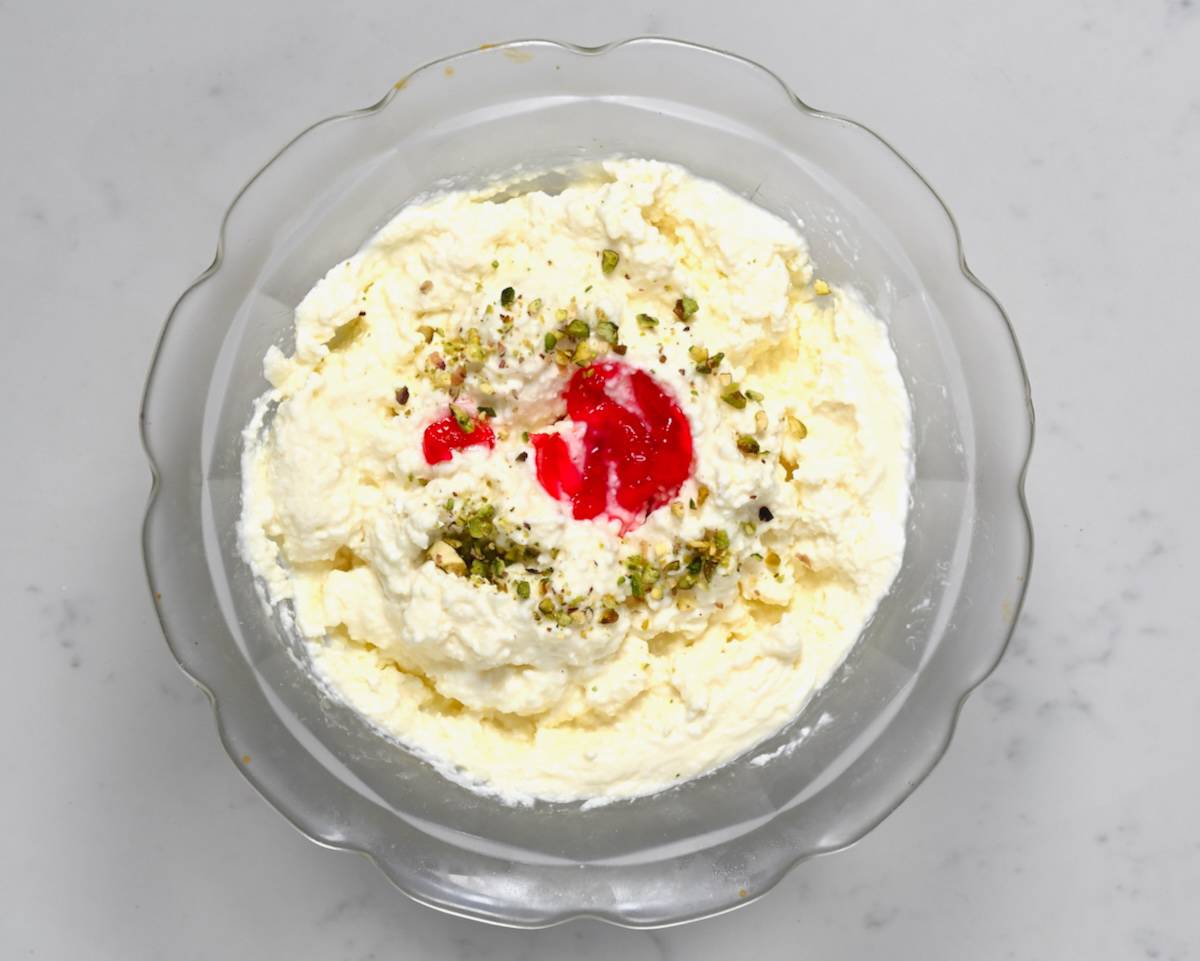
Ashta is a popular “staple” ingredient when it comes to Middle Eastern desserts and is perfect for topping and filling your favorite pastries. So learning how to make this Lebanese clotted cream will ensure you have it when you need it. The process is simple and quick, resulting in a delicious rich ashta cream, just like I remember from my childhood.
Table of Contents
What is ashta
This popular Arabic ingredient (aka qishta, kashta, and ghista) is a type of Middle Eastern clotted cream (similar to British clotted cream) made by heating and coagulating milk. It is usually sweetened and delicately flavored with orange blossom or rose water.
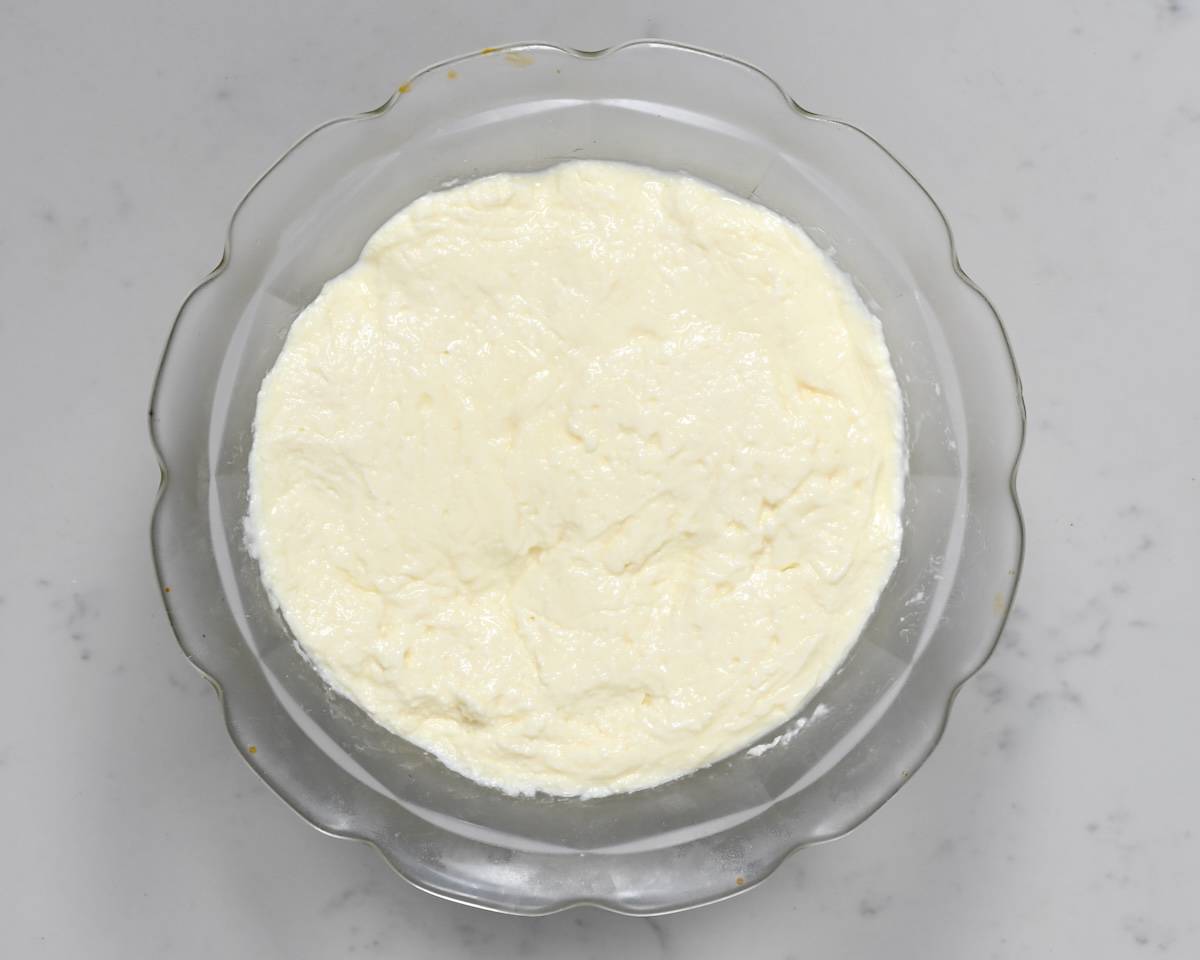
Ingredients
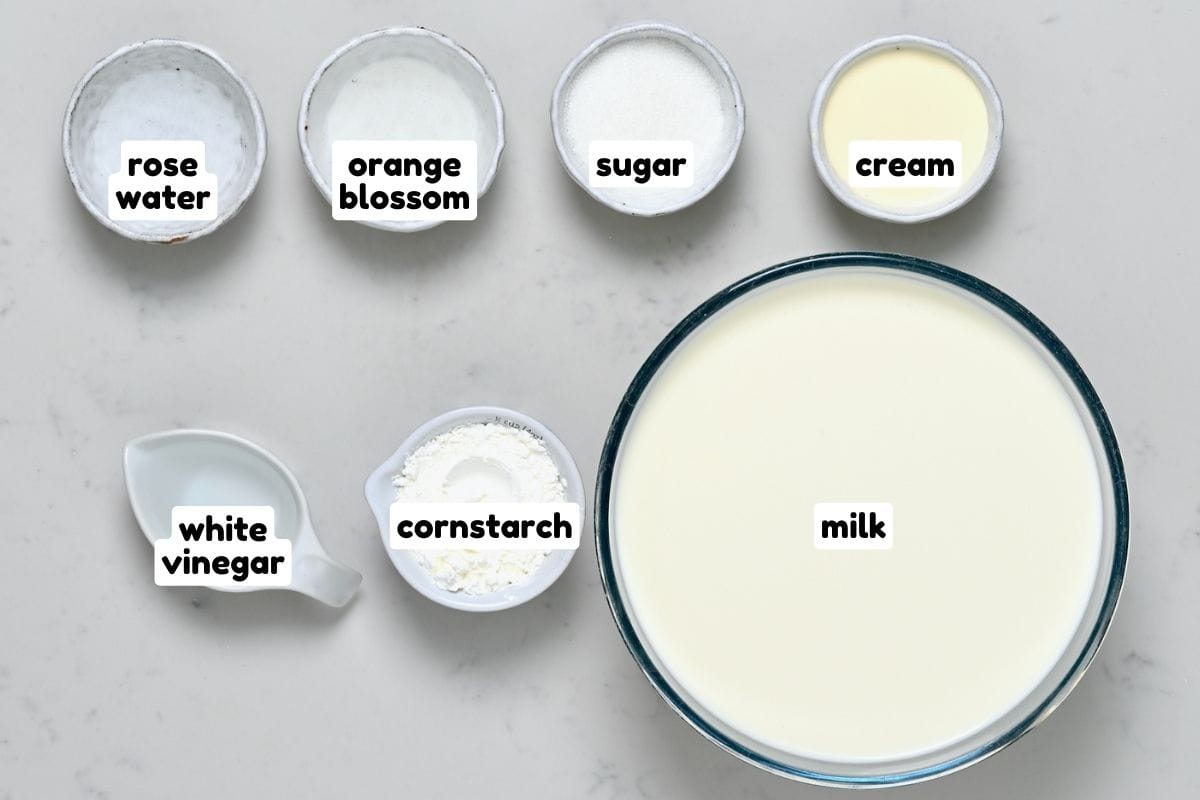
- Milk: I recommend using full-fat milk (whole milk) for the best results.
- Vinegar: I like to use regular white vinegar, though lemon juice would also work.
- Cornstarch: All-purpose flour could work too (1:1 ratio).
- Cream: Use full-fat whipping cream for this recipe. Heavy cream would also work (which contains slightly more fat).
- Sugar: (optional) Use regular sugar, honey/maple, or even a sugar-free sweetener like erythritol/xylitol, etc.
- Rose water and orange blossom water: To delicately flavor the cream.
How to make ashta
Step 1: Curdle the milk: In a large saucepan, bring 4.5 cups of milk to just below a boil over medium heat, stirring occasionally (to stop scolding at the bottom of the pan). Then remove the pan from the heat. Add the vinegar, and stir very gently but continuously with a spatula as the milk clots and forms curds. Finally, scoop the curds from the milk and transfer them to a sieve to strain any excess liquid. Then set aside to cool.
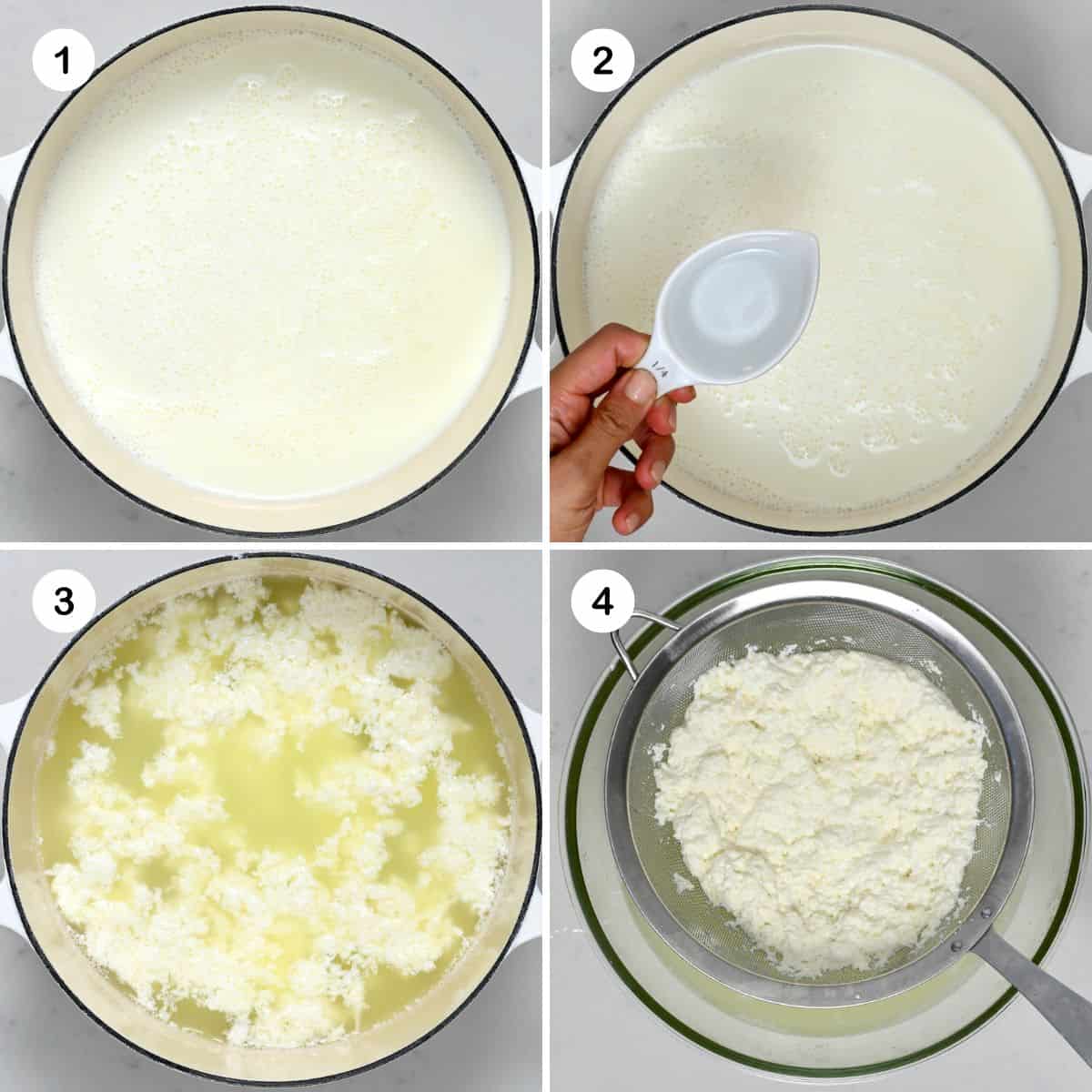
Step 2: Prepare the creamy mixture: In a small saucepan (pot), add ½ cup of milk with the cornstarch and mix until lump-free. Then, add the remainder of the milk, the sugar, and the cream. Heat over medium, constantly stirring (with a whisk or spatula), until the mixture begins to thicken (about 10-15 minutes).
Set the mixture aside to cool for several minutes. Then gently mix in the curds, rose water, and orange blossom. Finally, transfer the mixture to an airtight container (or bowl covered in plastic wrap) and chill in the fridge for at least 2 hours (I prefer overnight) before using. Make sure to mix the ashta cream before serving.
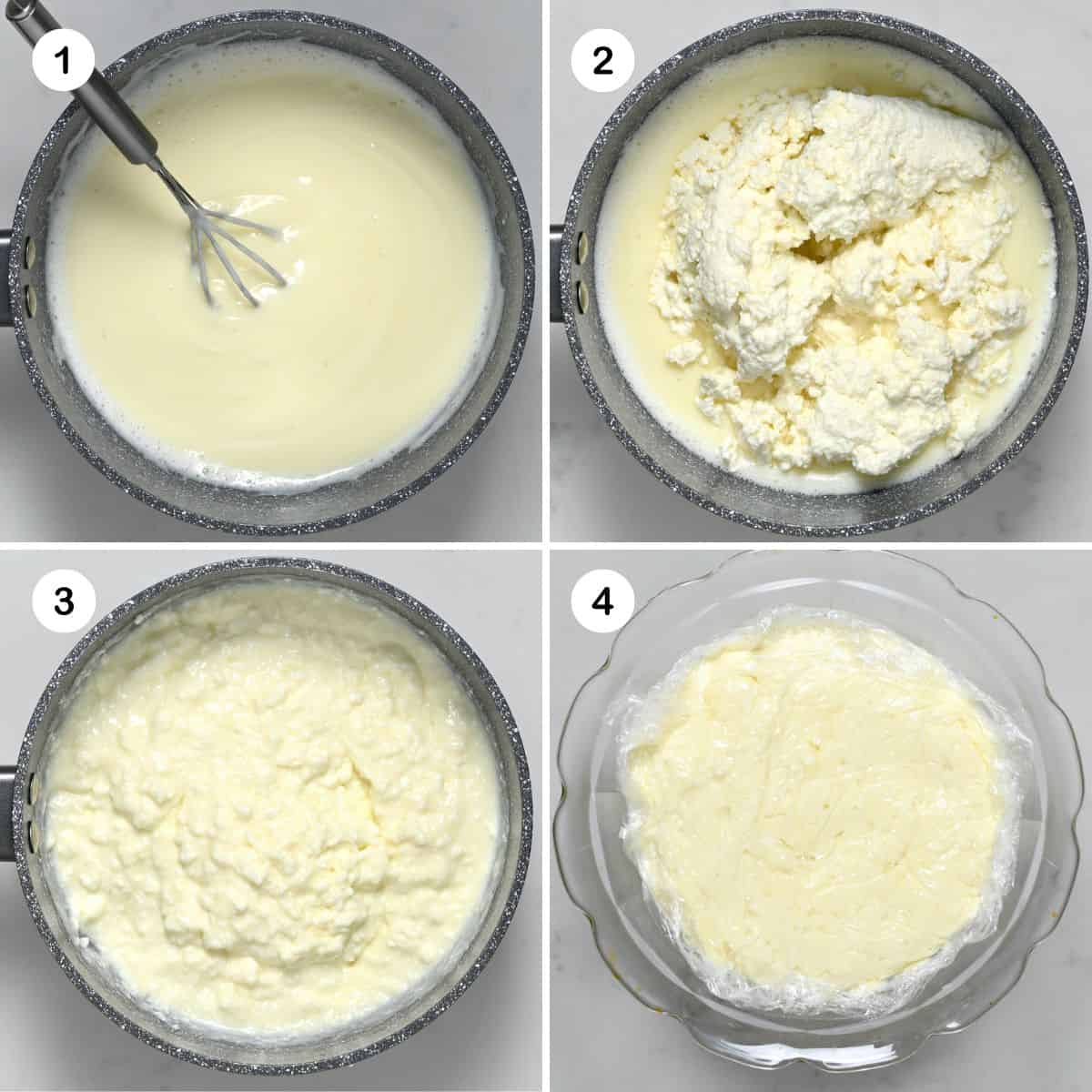
Press a layer of plastic wrap directly over the “clotted cream” surface to prevent skin from forming while it chills.
Ways to use ashta
This homemade ashta is highly favored in Middle Eastern desserts for its versatility. It serves beautifully as either a pastry filling, a topping, or on its own. Enjoy it:
- On Its Own: Enjoy ashta by itself with a drizzle of honey on top and some pistachios. Alternatively, spread it inside warm white bread with honey for a simple, delightful snack.
- As a Topping for Rice Pudding: This creamy pudding is topped with a dollop of ashta for extra richness.
- Add to Fruit Cocktail or Fruit Salad: chopped fruits topped with ashta for a luxurious twist.
- As a filling: Use as a filling for dates and Lebanese desserts such as qatayef, osmalieh, halawet al jibn, and kellaj Ramadan.

Make-ahead & store
Make ahead: I like to leave the kashta cream to chill in the fridge overnight (which doubles as extra time for the flavors to meld more). For that reason, I recommend making it a night before.
Store: Once prepared, store it in an airtight container in the refrigerator for up to 3 days. I don’t recommend freezing it, so aim to use it all within that time.
More Middle Eastern desserts
If you try this homemade ashta cream, let me know how it goes in the comments below. I’d appreciate a recipe card rating and would love to see your recipe recreations – tag me on Instagram @Alphafoodie!
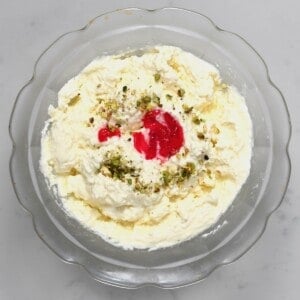
Ashta
Ingredients
- 3 lb whole milk 6 cups, divided
- 1.2 oz white vinegar 3 Tbsp or lemon juice
- 1.35 oz corn starch 6 Tbsp
- 1.35 oz sugar 3 Tbsp or sweetener of your choice
- 1.95 oz cream 4.5 Tbsp whipping cream OR heavy cream
- 2 tsp rose water
- 2 tsp orange blossom
This will yield about 2 cups of ashta.
Instructions
Step 1: Curd the milk
- In a large saucepan, bring 4.5 cups of milk to just below a boil over medium heat, stirring occasionally.
- Remove the pan from the heat. Add the vinegar. Stir gently but continuously with a spatula as the milk clots and forms curds.
- Scoop the curds from the milk and transfer them to a sieve to strain any excess liquid. Then set aside to cool.
Step 2: Prepare the creamy mixture
- In a small saucepan, add ½ cup of milk with the cornstarch and mix until lump-free. Add the remainder of the milk, the sugar, and the heavy cream.Heat over medium, constantly stirring (with a whisk or spatula), until the mixture begins to thicken.
- Set the mixture aside to cool for several minutes. Gently mix in the curds, rose water, and orange blossom. Stir to incorporate.
- Transfer the mixture to an airtight container (or bowl covered in plastic wrap) and chill in the fridge for at least 2 hours (or overnight) before using.Mix before serving.
Notes
Nutrition
Nutrition information is automatically calculated, so should only be used as an approximation.

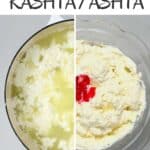
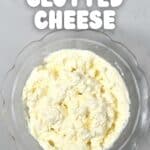
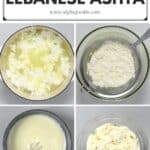
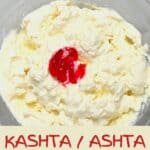
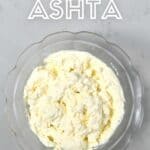
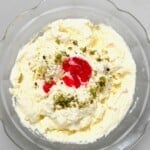


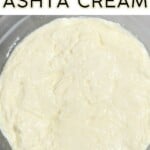
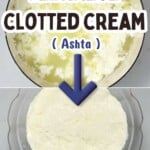
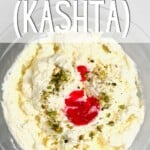
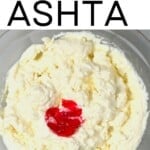
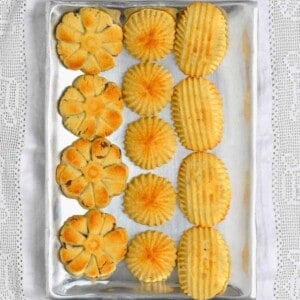
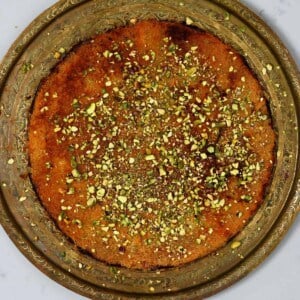
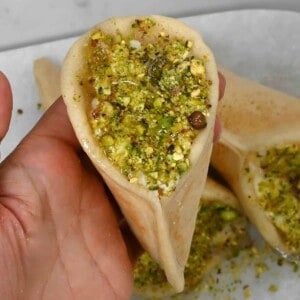









If I am using store-bought ricotta cheese, what is the quantity I need to buy ?
Hi Tishana,
You need 3/4 cup of store-bought ricotta cheese in place of the milk curds. I hope this helps.
if using ricotta cheese rather than curds, how much ricotta to use?
Hi Claire,
You can use 3/4 cup ricotta cheese in place of the milk curds. I hope this helps.
The ingredients list 6 cups of milk, but it seems it all is used for the curds. How much additional milk is needed for the creamy mixture?
Hi Alia,
4.5 cups of those 6 cups of milk are used for the curds. I hope this helps.
Amazing, done it today and follow the recipe to the letter. Thanks heapa
Glad you liked it, Mo!